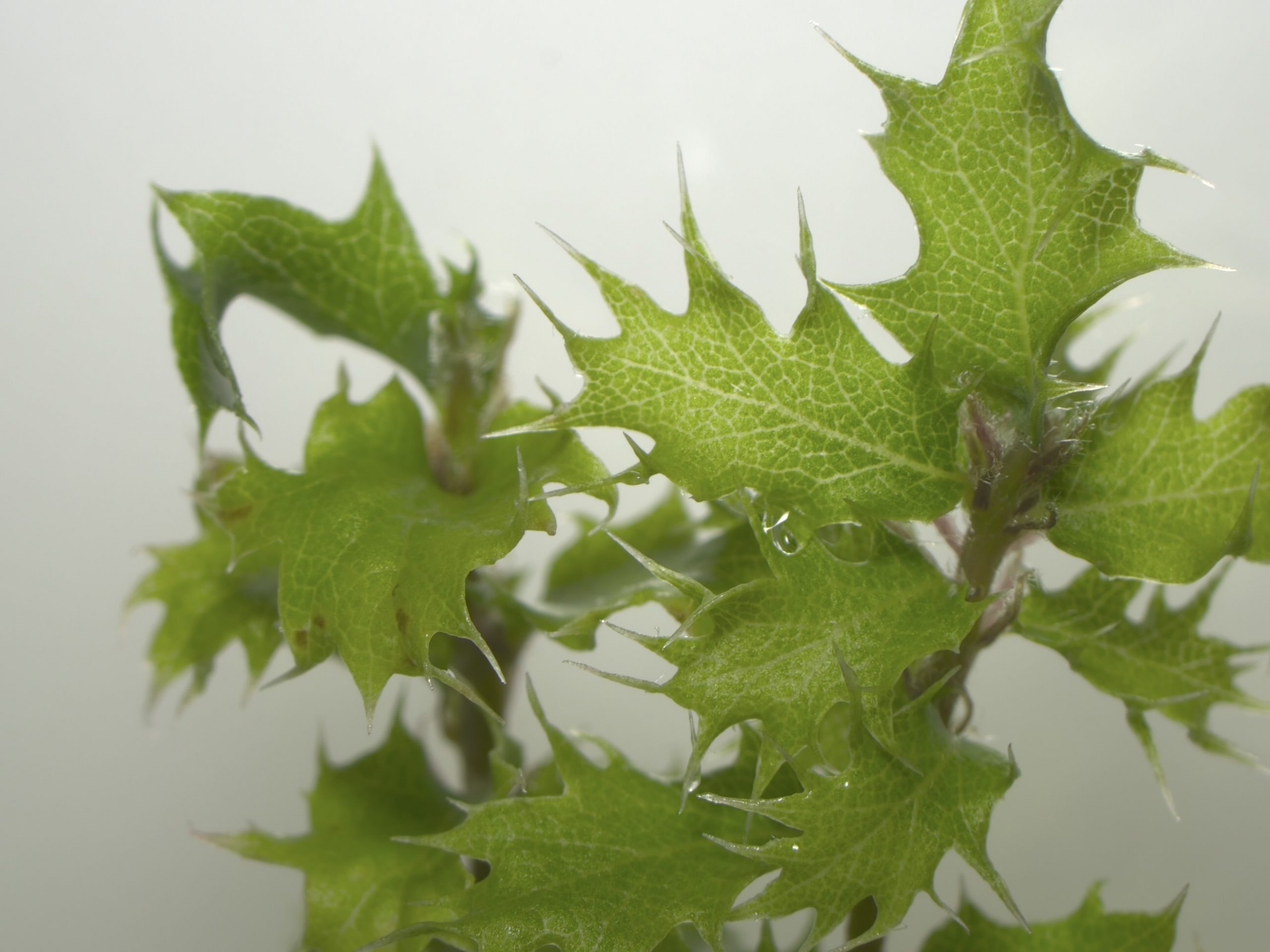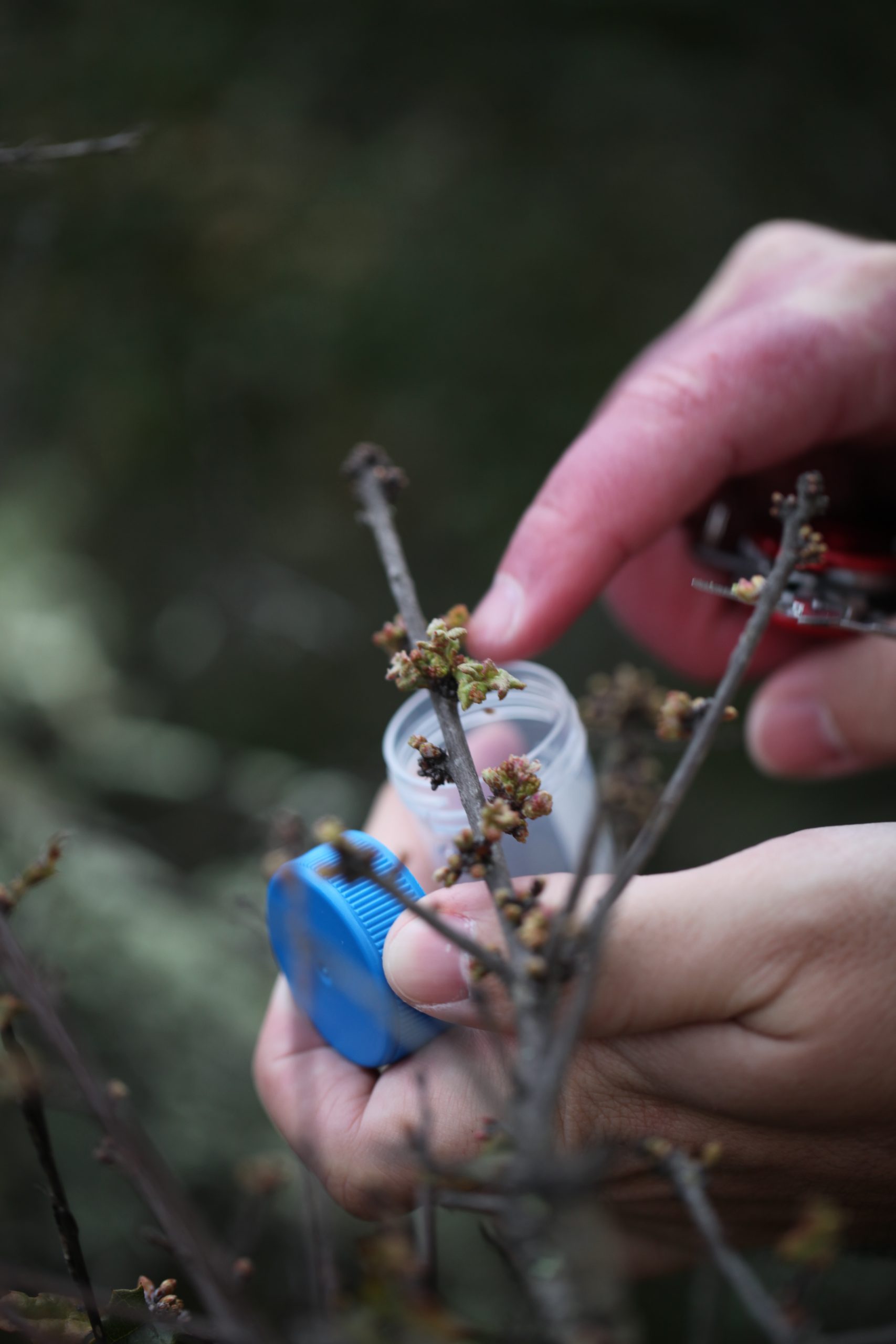Dr. Joe Ree
Our March Conservation Champion, Dr. Joe Ree, brings a life-long love of plants and innovative spirit to his work at the San Diego Zoo Wildlife Alliance where he leads research into the use of cryopreservation and tissue culture to preserve endangered oak species, with an emphasis on California scrub oak (Quercus dumosa). His pioneering efforts not only deepen our understanding of these exceptional species but also pave the way for more effective conservation strategies that are crucial for safeguarding the biodiversity of our native flora and our planet’s ecosystems. Joe embodies the commitment to collaboration that is the hallmark of CPC’s conservation community. As he says, “We’re not going to save imperiled species by ourselves. This is a team effort…as that network grows, so does our ability to protect the life that makes our world beautiful.”
When did you first fall in love with plants?
It’s hard not to fall in love with plants when you grow up in the Willamette Valley of Oregon. Fir, pine, cedar, maple, cottonwood, and oaks grow tall, hiding the horizon behind a green curtain. When my parents took my sister and I to see Mt. Saint Helens a little less than two decades after it erupted in 1980, we first visited the on-site museum, where I saw pictures of these forests laid low from the eruption. Old trees felled by the fury of the Earth. I thought of the forest in the nearby park close to my home and imagined what it would look like if it burned too. I still remember how much distress I felt at the thought.
Then we walked outside of the museum to see how the landscape had changed in the intervening years. Those fallen trees were mostly still there, but among them were flowering bushes and saplings. Butterflies flitted here and there, and birds sang from their perches of broken trees. In the background rose the half-destroyed volcano, but all around it was a carpet of life growing from the destruction it had created. When I suffer a setback, I think about that forest. From ashes, life. From difficulty, perseverance. In a way, those forests became part of my soul and inseparable from my sense of self. Only a particularly rough period of grad school shook that belief, yet I regrew and here I remain, working with plants.
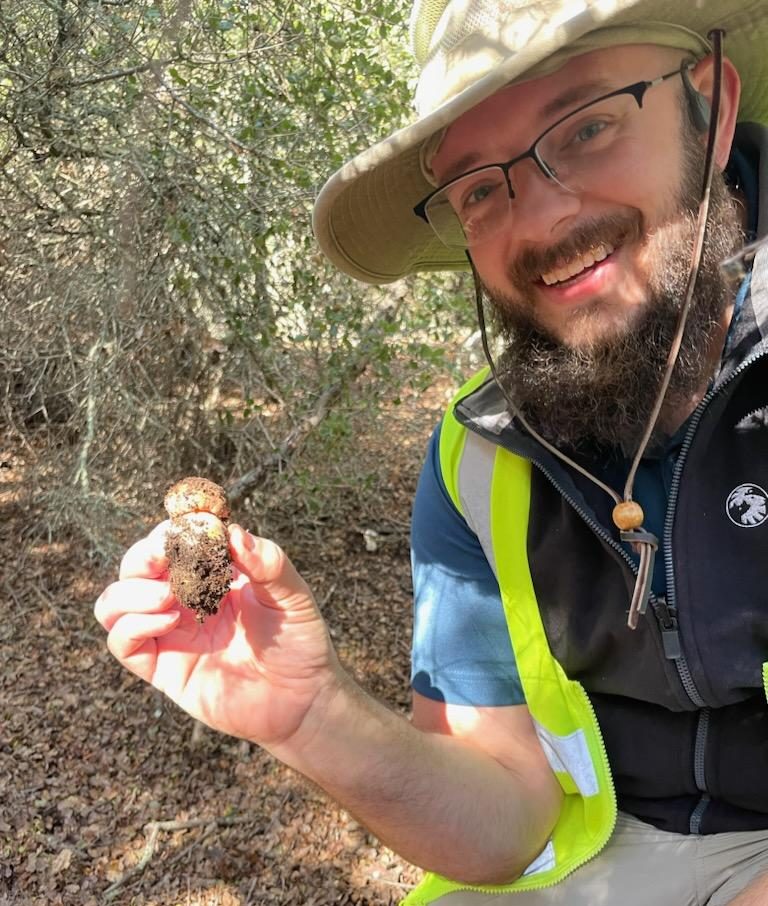
What was your career path to researching cryopreservation and tissue culture methods for the conservation of plant species?
My undergraduate major at Oregon State University was BioResource Research, which required writing an undergraduate thesis based on working in a lab. I visited several labs and each lab amazed me with their lines of research. When I visited the Forest Biotechnology Laboratory and walked into their tissue culture lab filled with shelves of poplar trees growing on agar, I thought a single word: “Yep.” I’ve worked with tissue culture ever since, and I have no intention of changing if I can help it.
After working in an industrial lab after college, my then-girlfriend and now-wife had to move back to Brazil. Luckily, the local university had a graduate program that heavily focused on tissue culture. I applied and was accepted, learned Portuguese, hopped on a plane, and then spent six years and change working with South American palm trees in tissue culture. The cryopreservation work became a priority after a major aspect of my doctorate project fell through (the rough period I mentioned above). I became obsessed with the intersection of physics and biology. Water molecules orienting themselves into sharp, sea urchin-like balls of expanding needles became the face of the enemy. I learned many ways of defeating that enemy in palm somatic embryos, and I hope that many of the same methods apply to oaks.
Based on your experience and research, what are some of the pressing conservation needs impacting the U.S.’s rare and native oaks?
The threats to our oaks are legion: invasive grasses that drown saplings in shade, more frequent and hotter fires, diseases that rot the roots of mature trees, roving packs of feral bulldozers, and the perennial dread that is climate change. We might be able to mitigate those threats, but they will remain. While they remain, they will whittle away the genetic diversity of our oaks. Decreasing genetic diversity reduces the ability of oaks to adapt to a changing world. We need more people capable of tissue culture and cryopreservation and the facilities to perform the needed work.
With these technologies, a tree can be sampled, cultured, cryopreserved, and remain unchanging in the ultracool temperatures of liquid nitrogen for years, decades, and, perhaps, centuries. If the original tree is destroyed, we can take the sample from cryo, regrow it, and return it to nature—at least in theory. This technology is still in its infancy, but it is a technology that we need, and we need it now. More hands, more eyes, more thoughts, more effort, more tests, more collaboration, more everything, because the one thing we will never have is more time. Besides the technology aspect, another thing we can do is encourage and support citizen science. For example, I’d like to state my appreciation for the work of Jim Crouch of Escondido, CA, who is growing Engelmann oaks (Quercus engelmannii) and working with land owners to plant them. Planting trees in our time is a gift for future generations.
What conservation project(s) are you currently working on? What successes or challenges have you encountered in your work?
I developed an effective protocol of harvesting fresh stems from oak and other chaparral plants and culturing them in tissue culture, but several major objectives remain. Cryopreservation of stem tissue is difficult, so I am developing the means of creating asexually-derived embryos from leaves and stems, which tend to survive cryopreservation more effectively. It is, unfortunately, quite a complicated process requiring multiple more steps.
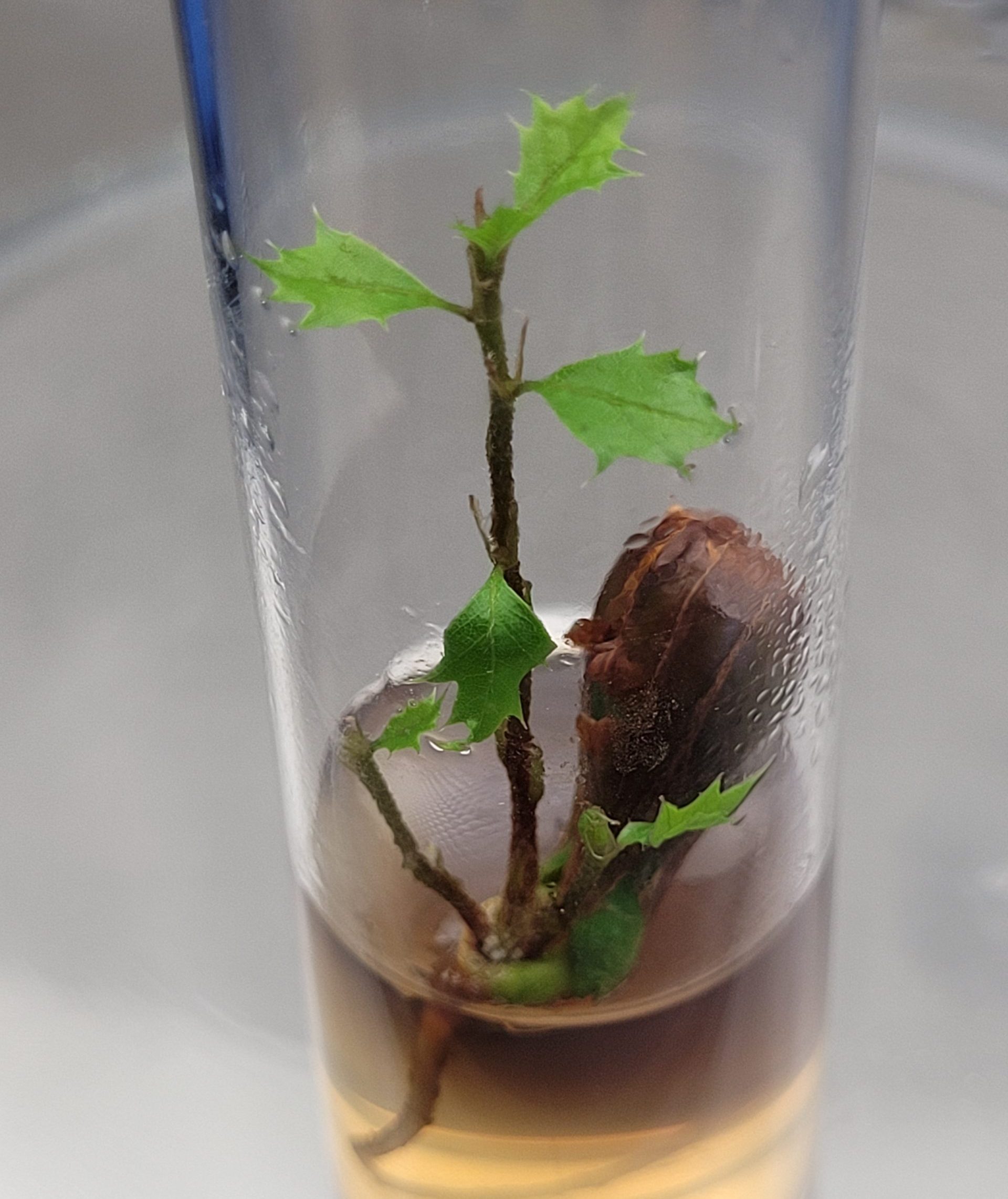
Plants grown in the lab must be acclimated to greenhouse conditions because those plants never had to worry about dehydrating, had all their needs met without effort, never felt the bite of an insect, or ever felt the force of a breeze. The shock of moving between agar to soil is often lethal. I’m developing new methods to ensure that that shock is mitigated. One of the methods I am most excited to research is the use of native mycorrhizal fungi to help the oaks adapt to what, to them, must be a strange new world. In nature, mycorrhizal fungi and oaks have a tight relationship. Mycorrhizae transfer nutrients to the tree, and the tree transports photosynthesis-derived sugars to the mycorrhizae. However, in the dry climate of Southern California, this relationship has an additional facet: water.
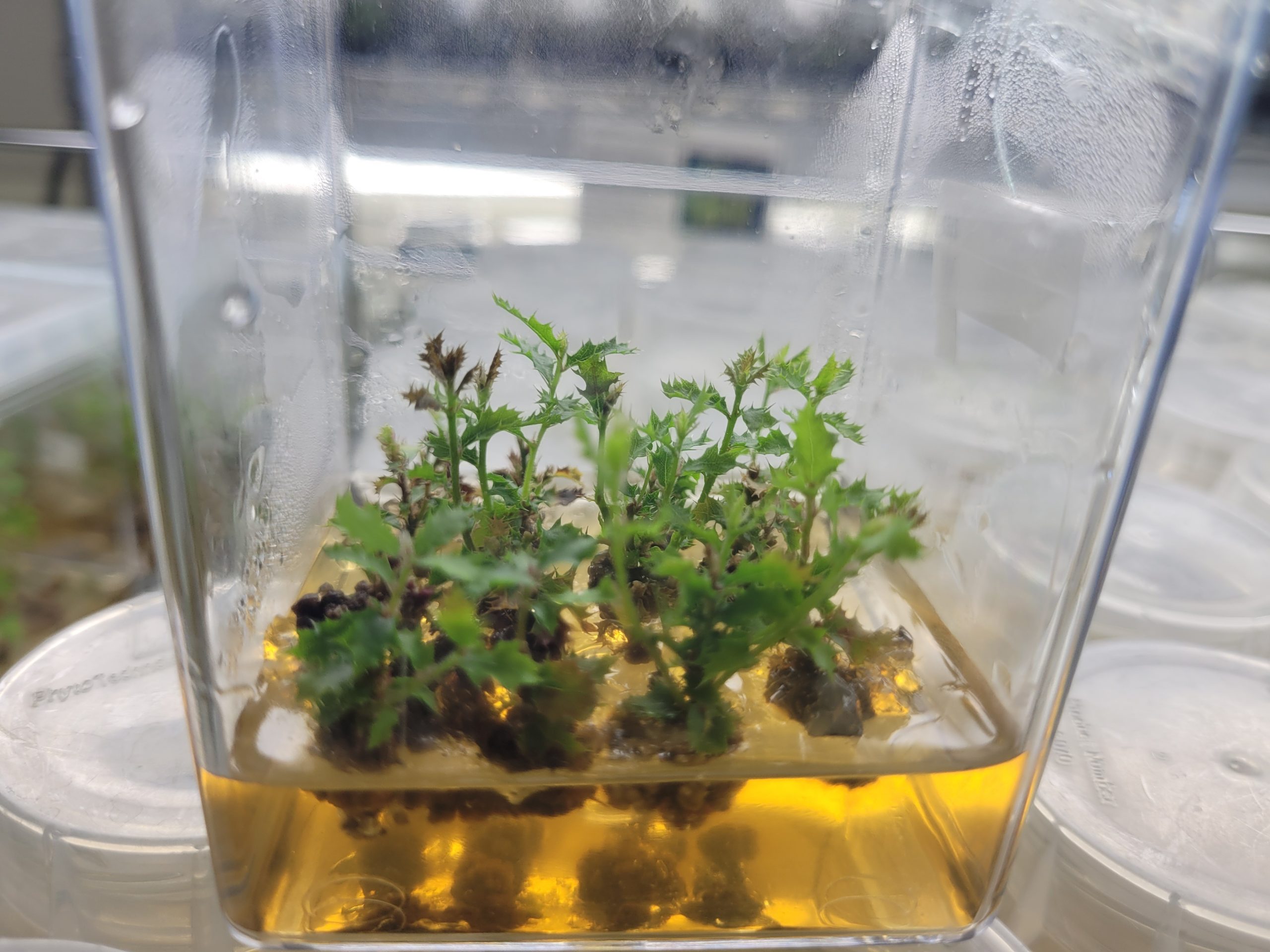
Oaks tend to make deep roots to tap into ground water. They bring up water from the depths for their mycorrhizae, while the mycorrhizae spread through the soil to find pockets of moisture within the sandy soil. With my colleague Ruby Iacuaniello, who knows far more about finding and identifying fungi than I do, we are trying to culture these fungi in tissue culture so that we can inoculate the oaks with their symbiotic partners even before we plant them.
What has surprised you about working with and learning more about oaks, or rare plants in general?
For every paper with a focus on a rare plant, there seems to be a hundred papers focused on a domestic species. This makes sense—maize affects our day-to-day life more than, say, the Del Mar manzanita. Agriculture tends to focus on elite cultivars, the prized breeds created for greater yields, disease resistance, or other beneficial characteristics.
The published research focuses on how to cultivate these few elite individuals perfectly in tissue culture. I can’t do that for my oaks, because my goal is creating the means of cultivating the majority of the entire species in tissue culture. My focus is then not on creating ten thousand tailored suits, but a one-size-fits-most boilersuit. Such a thing is rare in the published literature.
Most oak research revolves around Mediterranean species like cork oak, but several groups in the United States have published work on our own oaks. I can’t speak for those groups, but it sometimes feels that I’m on the frontier with a half-sketched map with ‘here be dragons’ scribbled in the margins. I find I like the adventure, as I can climb a metaphorical mountain, say of the cultivation of the Del Mar manzanita in tissue culture, and I can be relatively sure I am the first to ever climb that mountain. I am afraid that I might have narrowed the areas in which I can be happy in my profession, because no amount of work with maize cultures can ever match that realization.
What advice would you give to those who wish to learn more about how they can help save imperiled plant species?
All effort is a worthy effort. We’re not going to save imperiled species by ourselves. This is a team effort. You don’t need to spend fifteen years reading tissue culture and cryopreservation research articles to have a beneficial impact that will reverb across the generations.
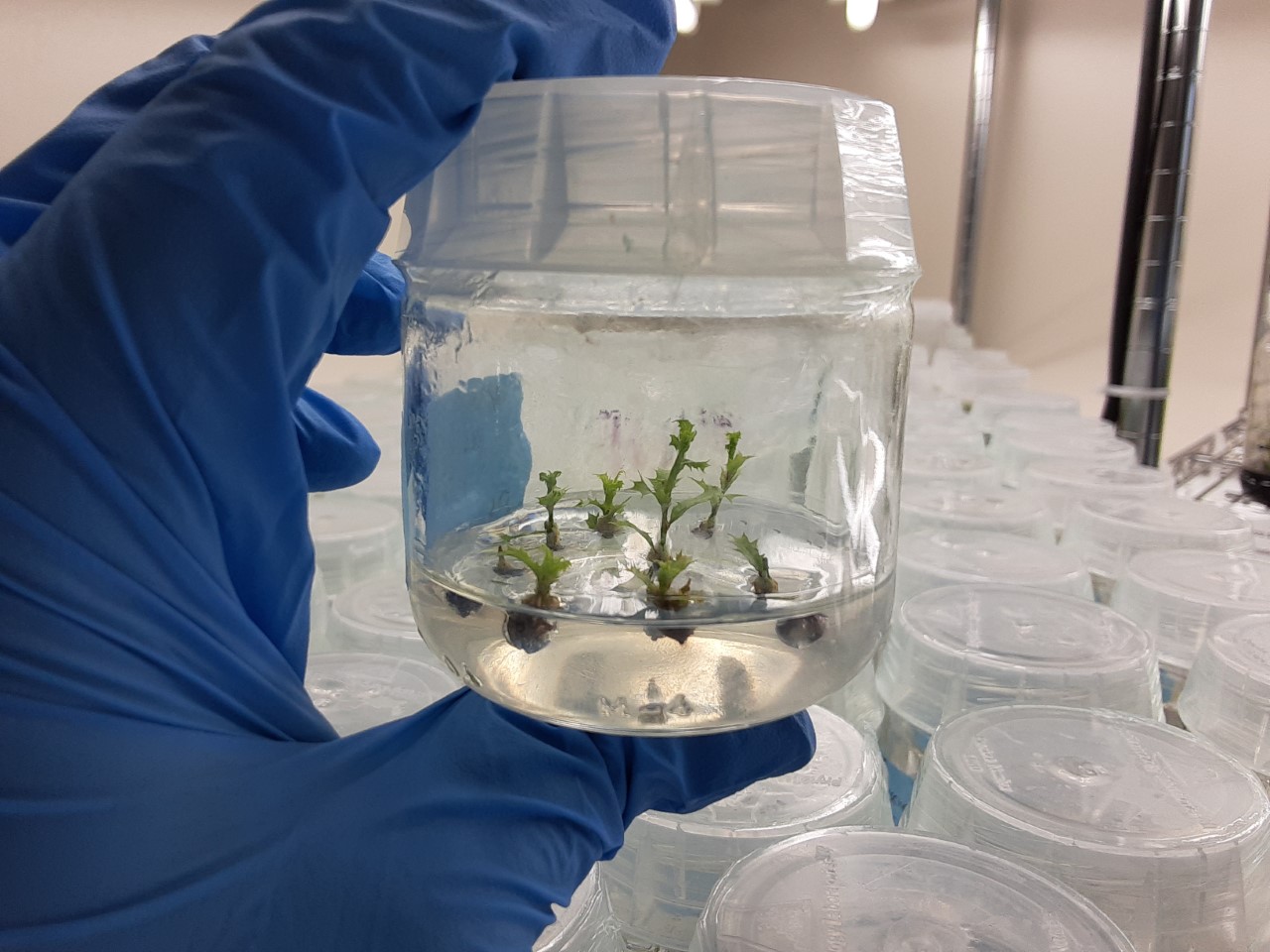
As the proverb goes ‘a society grows great when people plant trees whose shade they know they shall never sit in.’ What I do is but one aspect of what is required to ensure that these species will never fade from the Earth. Ask yourself what you love to do. I love lab work, so I work in a lab. There might be volunteering opportunities if that sounds appealing to you. I’d like to thank Mandy Butler, who generously volunteers her time helping me in the lab just about every week. If you love gardening, you can embark on a project to replace non-native ornamentals with native ones. If you love the outdoors, there might be opportunities to help with land restoration work. You can write to your local representative to voice your support for measures that protect rare plants. Citizen science, especially citizen science that gives room for people to join and collaborate not only helps, but it creates a tight network of people able to share knowledge. As that network grows, so does our ability to protect the life that makes our world beautiful.
